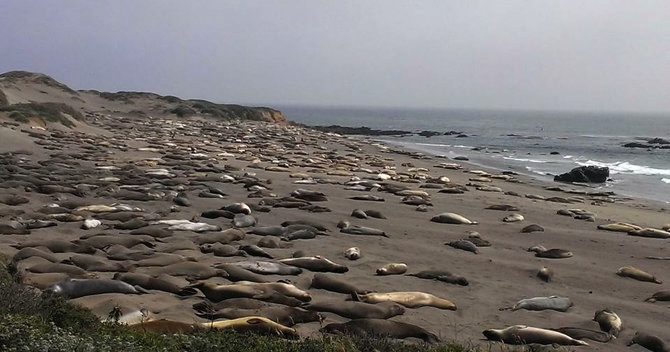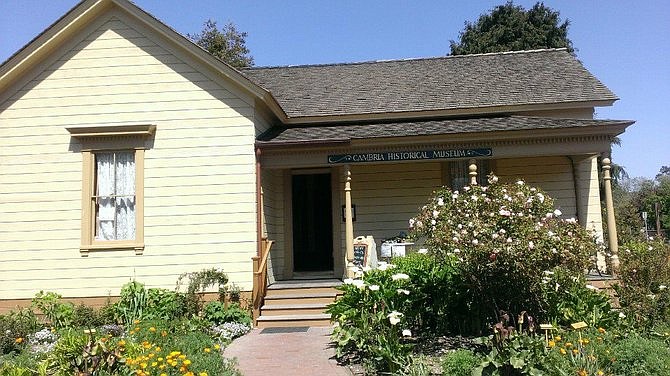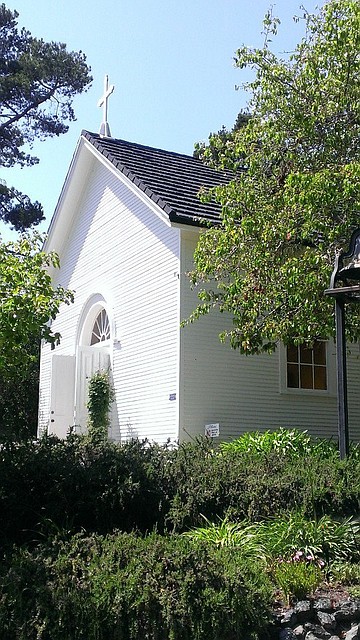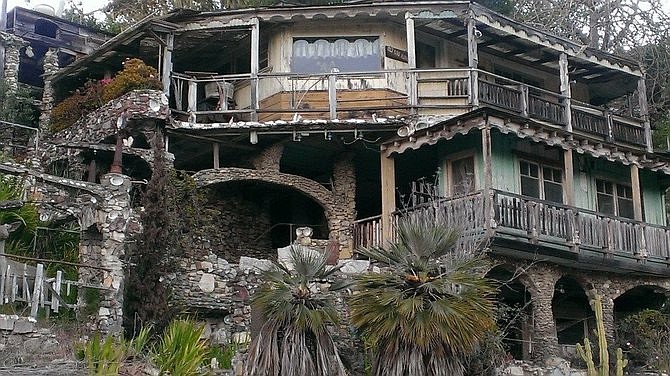 Facebook
Facebook
 X
X
 Instagram
Instagram
 TikTok
TikTok
 Youtube
Youtube

Unexpected. That’s the word that comes to mind when I think about my recent trip to Cambria, California.

Cambria, located roughly a half hour north of San Louis Obispo, reminded me of the Midwest somehow. The kind of place you’d expect to see if you were reading King’s The Children of the Corn or Bradbury’s Something Wicked This Way Comes. With antique shops and local eateries scattered throughout town, there's plenty to see and do despite it being smaller than I expected.
In the heart of town is the Cambria Historical Museum, restored from the Guthrie-Brancini house. I enjoy pretty much all museums, and this one was no different as it lent some insight into settlers' daily life in the town long ago.

Across the street from the museum, up a very steep hill, is the Old Santa Rosa Chapel. Call me morbid, but the most notable thing for me was not the chapel itself, but the cemetery directly behind it. It was picturesque and serene, and I have to admit that I enjoyed walking through it.
On the corner of Main Street was something I was surprised to see – something we don’t have enough of in South Bay San Diego: a French pastry dessert cafe. The apple almond tarts served there were divine.
If you’re in the mood to walk, just outside town is a beachfront known as Otter’s Cove. I didn't see any otters frolicking about while I was there, but the beach is a nice view nonetheless.

On the other side of town is an oddity known as Nitt Witt Ridge.
Considered a historical landmark, Nitt Witt Ridge (left) is a house on a steep hill that was essentially created by hand by trash collector/recluse Arthur Harold Beal, otherwise known as Captain Nitt Witt. Over 50 years, Beal created his "Castle on the Hill," as he called it, using materials such as beer cans, abalone shells and concrete and using simple tools.
A few miles away from town, in San Simeon, is a beachfront called Elephant Seal Vista (top). There, you can observe from a perch literally hundreds of seals, sea lions and elephant seals as they play, cover themselves with dirt, spar, and sing. There were so many of them that I didn't know where the sand started and the seals stopped.
It's troubling to know that, as a result of a volatile economy, places like Cambria are in jeopardy of disappearing. That might be of little importance to some, but I feel a visit to history-rich locations like this are well worth a try. See them while you can.


Unexpected. That’s the word that comes to mind when I think about my recent trip to Cambria, California.

Cambria, located roughly a half hour north of San Louis Obispo, reminded me of the Midwest somehow. The kind of place you’d expect to see if you were reading King’s The Children of the Corn or Bradbury’s Something Wicked This Way Comes. With antique shops and local eateries scattered throughout town, there's plenty to see and do despite it being smaller than I expected.
In the heart of town is the Cambria Historical Museum, restored from the Guthrie-Brancini house. I enjoy pretty much all museums, and this one was no different as it lent some insight into settlers' daily life in the town long ago.

Across the street from the museum, up a very steep hill, is the Old Santa Rosa Chapel. Call me morbid, but the most notable thing for me was not the chapel itself, but the cemetery directly behind it. It was picturesque and serene, and I have to admit that I enjoyed walking through it.
On the corner of Main Street was something I was surprised to see – something we don’t have enough of in South Bay San Diego: a French pastry dessert cafe. The apple almond tarts served there were divine.
If you’re in the mood to walk, just outside town is a beachfront known as Otter’s Cove. I didn't see any otters frolicking about while I was there, but the beach is a nice view nonetheless.

On the other side of town is an oddity known as Nitt Witt Ridge.
Considered a historical landmark, Nitt Witt Ridge (left) is a house on a steep hill that was essentially created by hand by trash collector/recluse Arthur Harold Beal, otherwise known as Captain Nitt Witt. Over 50 years, Beal created his "Castle on the Hill," as he called it, using materials such as beer cans, abalone shells and concrete and using simple tools.
A few miles away from town, in San Simeon, is a beachfront called Elephant Seal Vista (top). There, you can observe from a perch literally hundreds of seals, sea lions and elephant seals as they play, cover themselves with dirt, spar, and sing. There were so many of them that I didn't know where the sand started and the seals stopped.
It's troubling to know that, as a result of a volatile economy, places like Cambria are in jeopardy of disappearing. That might be of little importance to some, but I feel a visit to history-rich locations like this are well worth a try. See them while you can.
Comments